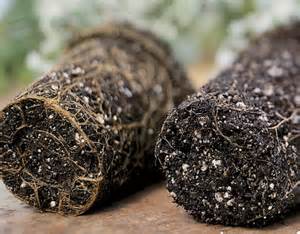Appearances can be deceiving, especially when working with plants. It’s easy to assume that because you water the same day and same amount to every plant, that this is the proper way to water your plants. But you don’t know is what’s going on below the surface. The root structure of the plants is the first thing that affects the overall health and vigor of a plant
So, with the root system being so important, what should you look for in a healthy root system of a potted plant? One of the most important factors to look for is nice thick white roots. These roots should go all the way down to the base of the pot, not just at the surface. If they’re only staying at the surface then chances are there is a water issue with the plant. The other thing that you want to look for a nice little running routes throughout the ball of the plant. These are the little feeder roots that are going to suck up nutrients and water. The thicker roots are there for anchorage and support, as well as intake of nutrients. What you should not see a brown mushy routes. This could be an indication of too much water or possible fungus and rotting.
Going back to the top of the plant; the overall appearance can look fine for weeks on end, but if there’s a root problem you’re not going see it until it’s almost too late to overcome.
So we get back to appearances; don’t assume because a plant has leaves that are wilting that it needs water. My best advice is to actually get in there and feel the soil. Use your finger, use a plant auger, use a moisture meter if you have to, but check the soil. With all three of those items, check the soil in more than one spot. You might have just watered on one side of the plant consistently, so one-sided the plant is showing problems. Also, be sure to follow any directions that are given to you read regarding the application of fertilizer; too much or too little is not going to help your plant. As a matter fact too much can easily burn the roots and cause problems in the growth of the plant.
So appearances can be deceiving-you need to know what’s going on down below the foliage area and in that root ball. Once you know how the roots are growing, you will have a better idea of how to take care of your plants needs.







